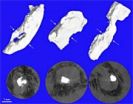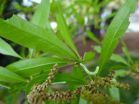(Press-News.org) Supernovae—stellar explosions—are incredibly energetic, dynamic events. It is easy to imagine that they are uncommon, but the universe is a big place and supernovae are actually fairly routine. The problem with observing supernovae is knowing just when and where one is occurring and being able to point a world-class telescope at it in the hours immediately afterward, when precious data about the supernova's progenitor star is available. Fortunately the intermediate Palomar Transient Factory (iPTF) operated by Caltech scans the sky constantly in search of dramatic astrophysical events. In 2013, it caught a star in the act of exploding.
The iPTF is a robotic observing system mounted on the 48-inch Samuel Oschin Telescope on Palomar Mountain. It has been scanning the sky since February 2013. The iPTF (and its predecessor experiment, the Palomar Transient Factory [PTF], which operated between 2009 and 2012) regularly observes a wide swath of the night sky looking for astronomical objects that are moving and developing quickly, such as comets, asteroids, gamma-ray bursts, and supernovae. Both the earlier PTF and the current iPTF collaborations are led by Shrinivas Kulkarni, the John D. and Catherine T. MacArthur Professor of Astronomy and Planetary Science and director of the Caltech Optical Observatories.
Last year the iPTF discovered an object of special interest: a supernova with a spectral signature suggesting that its progenitor star was a Wolf-Rayet star. Massive stars are typically structured like an onion, with the heaviest elements in the core, while lighter elements are layered over them and then frosted, if you will, by a layer of hydrogen gas on the stellar surface. Wolf-Rayet stars, which are unusually large and hot, are exceptions to this rule, being relatively deficient in hydrogen and characterized by strong stellar winds. Astronomers have long wondered if Wolf-Rayet stars are the progenitors of certain types of supernovae, and according to a recent paper published in Nature this is just what the iPTF found in May 2013.
This supernova, SN2013cu, was picked up on a routine sky scan by the iPTF. The on-duty iPTF team member in Israel promptly sounded an alert, asking colleagues at the W. M. Keck Observatory on Mauna Kea to take a spectral image of the supernova before the sun rose in Hawaii.
When supernovae explode, they briefly ionize the sky immediately around them. The ionized materials rapidly recombine, producing unique spectral features that enable astronomers to get a full picture of the ambient material of a supernova event. This process lasts from minutes to a few days and hence is called a "flash spectrum" of the event. Flash spectrography is a novel observational method developed by Avishay Gal-Yam of the Weizmann Institute of Science in Israel, leader of the team that published the Nature paper.
In the case of SN2013cu, the flash spectrum showed relatively less hydrogen and relatively more nitrogen, suggesting that perhaps the progenitor of the supernova was a nitrogen-rich Wolf-Rayet star. This finding will enable astronomers to better understand the evolution of massive stars and identify potential progenitors of supernovae.
"I could not believe my eyes when I saw those high-ionization features perfectly matching emission lines from a Wolf-Rayet star," says Yi Cao, a graduate student from Caltech who works with Kulkarni. "Our software pipeline efforts were paying off. Now we are working even harder so that we can get flash spectra of many more supernova flavors to probe their progenitor stars."
Above all, the observation of SN2013cu highlights the success of the intermediate Palomar Transient Factory at catching the universe in the act of doing something interesting, something that might merit a second look. Though especially intriguing, SN2013cu is only one of over 2,000 supernovae that PTF/iPTF has detected during its four and a half years of observations. As Kulkarni remarks, "I am proud of how the global iPTF network is working together to invent new techniques enabling entirely new science."
INFORMATION:
The iPTF is a collaboration between Caltech, Los Alamos National Laboratory, the University of Wisconsin–Milwaukee, the Oskar Klein Centre, the Weizmann Institute of Science, the TANGO Program of the University System of Taiwan, and the Kavli Institute for the Physics and Mathematics of the Universe.
Coauthors on the paper, "A Wolf-Rayet-like progenitor of supernova SN 2013cu from spectral observations of a wind," include Kulkarni, Cao, Mansi Kasliwal, Daniel Perley, and Assaf Horesh of Caltech; Gal-Yam, I. Arcavi, E. O. Ofek, S. Ben-Ami, A. De Cia, D. Tal, P. M. Vreeswijk, and O. Yaron of the Weizmann Institute of Science; S. B. Cenko of NASA's Goddard Space Flight Center; J. C. Wheeler and J. M. Silverman of the University of Texas at Austin; F. Taddia and J. Sollerman of Stockholm University; P. E. Nugent of the Lawrence Berkeley National Laboratory; and A. V. Filippenko of UC Berkeley.
Supernova caught in the act by palomar transient factory
2014-05-23
ELSE PRESS RELEASES FROM THIS DATE:
Mapping atherosclerotic arteries: Combined approach developed
2014-05-23
A new method allows calcified and constricted blood vessels to be visualized with micrometer precision, and can be used to design containers for targeted drug delivery. Within the project "NO-stress", materials scientists from the Medical Faculty of the University of Basel combined cutting-edge-imaging techniques to visualize and quantify the constrictions caused by atherosclerosis.
Cardiovascular diseases, including atherosclerosis, are associated with plaque formation and the most prevalent cause of death worldwide. Unlike vessels and other soft tissues, the plaque ...
Risk is much more than a game
2014-05-23
Wildfires and flooding affect many more people in the USA than earthquakes and landslide and yet the dread, the perceived risk, of the latter two is much greater than for those hazards that are more frequent and cause greater loss of life. Research published in the International Journal of Risk Assessment and Management, suggests that a new paradigm for risk assessment is needed so that mitigation plans in the face of natural disasters can be framed appropriately by policy makers and those in the emergency services.
Maura Knutson (nee Hurley) and Ross Corotis of the University ...
The protective milk shot
2014-05-23
Antibodies against C. suis are transferred via the sow's very first milk to the piglets immediately after birth. This was discovered by veterinarian and parasitologist Lukas Schwarz and his colleagues in 2013. These findings prompted the researchers at the Institute for Parasitology to look for a way to increase the level of these antibodies in sows. The ultimate goal was to provide the piglets with as much antibodies as possible via their mother's milk during the first few days of life.
Piglets from infected mothers are healthier
The idea paid off. Piglets from infected ...
Nature inspires drones of the future
2014-05-23
Researchers have been taking tips from nature to build the next generation of flying robots.
Based on the mechanisms adopted by birds, bats, insects and snakes, 14 distinguished research teams have developed solutions to some of the common problems that drones could be faced with when navigating through an urban environment and performing novel tasks for the benefit of society.
Whether this is avoiding obstacles, picking up and delivering items or improving the take-off and landing on tricky surfaces, it is hoped the solutions can lead to the deployment of drones in ...
Rapid evolution aids spread of exotic plant species
2014-05-23
A team of Belgian biologists led by researchers at KU Leuven has provided the first genetic evidence that rapid evolution can help non-native plant species spread in new environments. Using samples of centuries-old herbaria and DNA analysis, the researchers reconstructed the genetic adaptations undergone by the Pyrenean rocket prior to its rapid spread in Belgium.
The Pyrenean rocket (Sisymbrium austriacum subsp. chrysanthum) is a plant that grows in the mountains of southern Europe and is particularly prevalent in the Pyrenees. The species was first reported in Belgium ...
Lack of plant diversity spurs cankerworm damage in cities
2014-05-23
Research from North Carolina State University finds that a lack of plant diversity is a key contributor to the widespread defoliation caused by cankerworms in cities, and highlights the role that increasing diversity can play in limiting future damage.
Fall cankerworms (Alsophila pometaria) are caterpillars that are native to the eastern United States and hatch in early spring. The cankerworms defoliate trees and other plants, eating new leaves as they emerge – which is both unsightly and can ultimately kill the plants.
"We see cankerworms doing more damage to trees ...
Flatland optics with graphene
2014-05-23
Researchers from CIC nanoGUNE, in collaboration with ICFO and Graphenea, introduce a platform technology based on optical antennas for trapping and controlling light with the one-atom-thick material graphene. The experiments show that the dramatically squeezed graphene-guided light can be focused and bent, following the fundamental principles of conventional optics. The work, published yesterday in Science, opens new opportunities for smaller and faster photonic devices and circuits.
Optical circuits and devices could make signal processing and computing much faster. ...
Bacterial adaptation contributes to pneumococcal threat in sickle cell disease patients
2014-05-23
Researchers have identified differences in the genetic code of pneumococcal bacteria that may explain why it poses such a risk to children with sickle cell disease and why current vaccines don't provide better protection against the infection. St. Jude Children's Research Hospital scientists led the study, which appeared earlier this month in the journal Cell Host & Microbe.
The findings will aid efforts to improve vaccine effectiveness and inform research into new ways to protect young sickle cell disease patients from life-threatening pneumococcal infections that can ...
Breakthrough in RSV research to help infected children
2014-05-23
Researchers at Le Bonheur Children's Hospital and the University of Tennessee Health Science Center announced results today from a clinical trial of a drug shown to safely reduce the viral load and clinical illness of healthy adult volunteers intranasally infected with respiratory syncytial virus (RSV).
Detailed results of this study were presented by lead researcher Infectious Disease Specialist John DeVincenzo, MD, this week during a poster discussion session at the American Thoracic Society 2014 International Conference in San Diego. He serves as medical director of ...
Argonne scientists discover new phase in iron-based superconductors
2014-05-23
Scientists at the U.S. Department of Energy's Argonne National Laboratory have discovered a previously unknown phase in a class of superconductors called iron arsenides. This sheds light on a debate over the interactions between atoms and electrons that are responsible for their unusual superconductivity.
"This new magnetic phase, which has never been observed before, could have significant implications for our understanding of unconventional superconductivity," said Ray Osborn, an Argonne physicist and coauthor on the paper.
Scientists and engineers are fascinated ...





